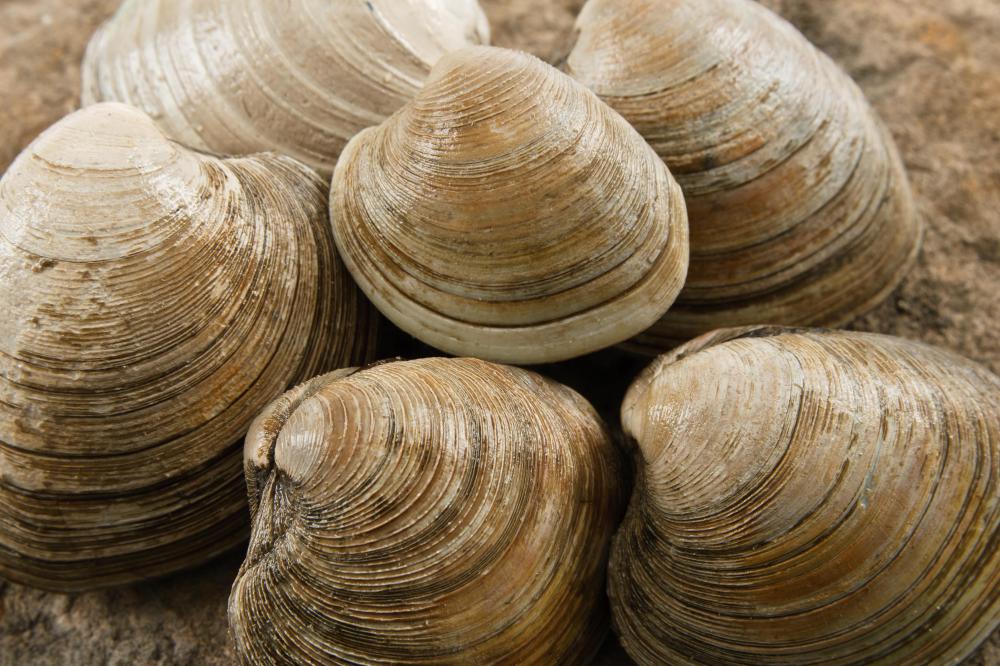At WiseGEEK, we're committed to delivering accurate, trustworthy information. Our expert-authored content is rigorously fact-checked and sourced from credible authorities. Discover how we uphold the highest standards in providing you with reliable knowledge.
What is Paralytic Shellfish Poisoning?
Paralytic Shellfish Poisoning (PSP) is a serious medical condition caused by the ingestion of saxotoxin, a toxin produced by certain dinoflagellates which are especially abundant during periods of algal bloom known as red tides. This condition cannot be cured, but it can sometimes be managed with the assistance of supportive therapy which can increase the possibility of recovery. In people who are older or immunocompromised, the risk of death from Paralytic Shellfish Poisoning is greatly increased.
The dinoflagellates responsible for PSP are especially abundant during red tides because they feed on the algae which proliferate during a red tide. If the algae bloom is pushed into shore, the dinoflagellates can be broken open in the surf, releasing their saxotoxin into the water. When filter feeders like mollusks ingest the saxotoxin, they sequester it in their bodies, which means that when another organism eats the shellfish, it also ingests the toxin.

Bivalves like oysters, clams, and mussels are especially dangerous during a red tide. However, the guts of crustaceans like crabs and lobsters can also be dangerous. When humans ingest enough saxotoxin, symptoms set in within two hours, and often as quickly as 30 minutes; if the symptoms of Paralytic Shellfish Poisoning do emerge, prompt medical attention is strongly recommended. Leftover shellfish, if there is any, should be taken to the hospital with the victim if requested, and otherwise discarded; the toxin cannot be destroyed through freezing or heat, so the seafood is not safe to eat.

Typically, the first sign is gastrointestinal distress, such as vomiting, nausea, cramps, and diarrhea. Neurological symptoms like slurred speech, difficulty walking, lack of coordination, a tingling or burning sensation, and dizziness follow shortly thereafter. When someone starts to experience shortness of breath, it indicates that the toxin has started to affect the muscles which help people to breathe, and the Paralytic Shellfish Poisoning has gotten extremely serious.

Fortunately, a number of measures are in place to protect consumers from Paralytic Shellfish Poisoning. During periods of red tide, the harvest of crustaceans and mollusks is usually banned, and it will not resume until ample testing has concluded that the seafood is safe again. When a red tide warning is in effect, signs are often posted at beaches to alert people to the fact, and notices may be aired on the radio or published in the newspaper as well to ensure that everyone is aware of the situation.
AS FEATURED ON:
AS FEATURED ON:













Discussion Comments
For those who are allergic to shellfish, I'm sure that they wouldn't have to worry about getting poisoning, since they're not allowed to eat it either way. However, it's good to know that others are becoming aware of this. Not only does the article help in this situation, but considering how red tide warnings are always issued, it's certainly a step in the right direction. Between the risk you can get from eating undercooked oysters, and the critical medical conditions you can obtain from eating fish during the tide, shellfish is one of those foods you always have to be on the lookout for.
Wow, I didn't know that there was more than one way to get food poisoning from shellfish, as I thought that all you had to do was cook it thoroughly. This is one reason why shellfish can be so dangerous. Not only do you have to make sure it's cooked all the way, but even more so, leaving it sitting out can cause some serious bacterial problems.
Post your comments